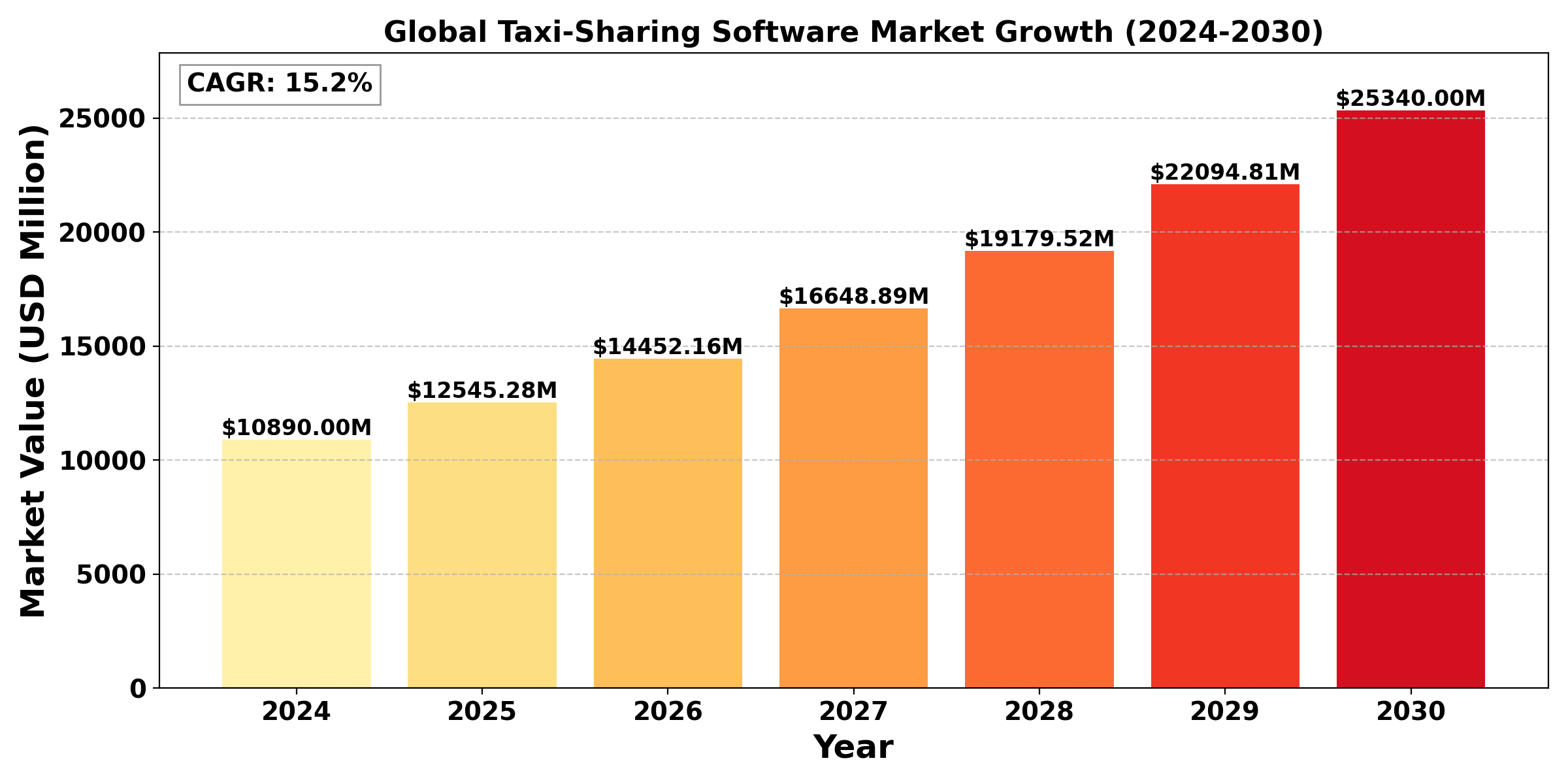TOP CATEGORY: Chemicals & Materials | Life Sciences | Banking & Finance | ICT Media
The "Global Taxi-Sharing Software Market" size was valued at US$ 10.89 billion in 2024 and is projected to reach US$ 25.34 billion by 2030, at a CAGR of 15.2% during the forecast period 2024-2030.
The "United States Taxi-Sharing Software Market" size was valued at US$ 3.89 billion in 2024 and is projected to reach US$ 8.92 billion by 2030, at a CAGR of 14.1% during the forecast period 2024-2030.
Taxi-sharing software is a digital platform that enables multiple passengers to share a taxi ride, helping reduce costs and improve efficiency. It connects riders with nearby taxis or other passengers traveling in the same direction, allowing them to share a single ride. The software typically includes features like real-time ride tracking, fare calculation, payment processing, and the ability to schedule or request rides. It is designed to optimize vehicle usage, reduce traffic congestion, and promote eco-friendly transportation by lowering the number of vehicles on the road.
Software solutions enabling taxi sharing and ride coordination.
The global market is experiencing rapid growth, driven by sharing economy trends. In 2023, total installations reached 280 million, with individual users accounting for 65% of demand. The corporate segment is growing at 16.8% annually. The market saw a 44% increase in demand for mobile integration in 2023. Mobile apps dominate with a 75% market share, while web platforms are growing at 16% annually. Asia Pacific leads with a 46% market share, while Europe is the fastest-growing region at 16.5% CAGR. The industry is focusing on developing machine learning algorithms, with a 52% growth in R&D investments.

Report Overview
Taxi-Sharing Software Market provides a deep insight into the global Taxi-Sharing Software market covering all its essential aspects. This ranges from a macro overview of the market to micro details of the market size, competitive landscape, development trend, niche market, key market drivers and challenges, SWOT analysis, value chain analysis, etc.
The analysis helps the reader to shape the competition within the industries and strategies for the competitive environment to enhance the potential profit. Furthermore, it provides a simple framework for evaluating and accessing the position of the business organization. The report structure also focuses on the competitive landscape of the Global Taxi-Sharing Software Market, Taxi-Sharing Software Market introduces in detail the market share, market performance, product situation, operation situation, etc. of the main players, which helps the readers in the industry to identify the main competitors and deeply understand the competition pattern of the market.
In a word, Taxi-Sharing Software Market is a must-read for industry players, investors, researchers, consultants, business strategists, and all those who have any kind of stake or are planning to foray into the Taxi-Sharing Software market in any manner.
Global Taxi-Sharing Software Market: Market Segmentation Analysis
The research report includes specific segments by region (country), manufacturers, Type, and Application. Market segmentation creates subsets of a market based on product type, end-user or application, Geographic, and other factors. By understanding the market segments, the decision-maker can leverage this targeting in the product, sales, and marketing strategies. Market segments can power your product development cycles by informing how you create product offerings for different segments.
Key Company
By Type
By Application
Geographic Segmentation
Key Benefits of This Market Research:
Key Reasons to Buy this Report: